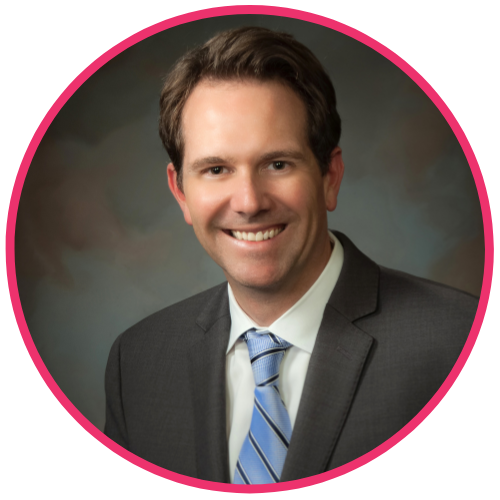
A few weeks ago, I had an interesting experience when I went into an auto-parts store to purchase a replacement air filter for my wife’s car. When I got to the counter, I told the store clerk what I needed. He looked up the part number in the computer and then pointed to a wall a few aisles away, telling me I could find it there. I was a little surprised that he didn’t take the time to walk me over to the aisle to find it, because that was typical of my past customer experience.
When I got to the aisle, it contained four shelves stretching fifteen feet each, all filled with filters from various manufacturers for just about any automobile make and model. After looking for several minutes, I eventually left, feeling frustrated by the clerk’s lack of customer service. I then went to another store down the street. When I got there, this clerk took the time to walk me over to the shelf and grab the filter that I needed. What’s more: he asked me if I had any questions, or if there was anything else he could help me with. What a novel concept, right?
Now, you may be asking, “So what does this have to do with healthcare compliance?”
In our line of work, we’re continually being asked for advice to help our healthcare leaders in answering the ongoing question, “Is this compliant?” Essentially, we are acting as an internal customer service representative, similar to these store clerks; our healthcare leaders are our customers. For that reason, if you want to improve the culture of compliance and get those leaders’ buy-in, then make sure you’re providing and delivering great customer service when consulting them.
So how do you do that? Here are three strategies that may help.
- Be Mindful of Knowledge Gaps, and Close Them When Necessary
When you are interacting with a healthcare leader about a compliance-related question, always be mindful of the knowledge gap that may exist between you and the healthcare leader about a requirement – and then take steps to close the gap.
Keep in mind these folks are not as knowledgeable about compliance programs, the terminology, or the regulations as you are. In my experience, the more familiar I am with a term or requirement, the less time I find myself focused on it. When that happens, I reach a point where it feels foreign to me that someone doesn’t understand what I understand. But I may need to take a step back and explain the term or concept that I otherwise don’t think about.
You also could start interactions with the default mindset that your leaders aren’t as familiar with compliance-related concepts as you are. Taking this approach helps ensure that your communication logically flows from one point to the next. It also helps establish that everyone is on the same page with what is expected and cuts down the time you have to spend responding to questions.

For example, let’s assume you’re proposing to your CEO that you’d like to have a third party come in and conduct a compliance program effectiveness (CPE) analysis. Just keep in mind your CEO may not know what a CPE is, so you may need to first explain what it is and where the concept came from (i.e., the 2005 OIG Compliance Program Guidance).
- Explain “The Why”, and Provide Alternative Solutions
Building off the prior strategy, it’s good “compliance customer service” to explain “the why” to your healthcare leaders when you are communicating with them.
Assume for a moment you’re not a compliance officer. You’re the CEO of a hospital and you’re looking to expand the hospital’s service line. During a recent strategic planning meeting, you pitched partnering with a local radiology practice to open a new imaging center. To make the proposal attractive to the radiologists, you want the hospital to pay for all the marketing expenses for the new joint venture. You email your compliance officer to ask if the hospital can cover these expenses for the physicians. Your compliance officer responds by saying no. There is no explanation, no questions are asked, and no offer of an alternative approach. If you were this CEO, would you feel supported by your compliance officer?

Explaining “the why” behind your answers and providing alternative options has a couple service-minded benefits for you and your healthcare leaders. First, it demonstrates that you genuinely took the time to expand their knowledge, unlike the store clerk at the first auto parts store I mentioned above. Over time, this will help reduce the knowledge gap that I mentioned above. Second, by providing alternative options, you are taking the time to think critically about their request which demonstrates you are trying to support them. This increases your chances they’ll reach out to you proactively instead of reactively in the future.
- Make Information User-Friendly for Them
A third service-minded strategy is to make information user-friendly (easy to find and digest) for them. This improves your chances of securing their buy-in because you are helping them be more efficient. Healthcare leaders get pulled in different directions all day long, and they will appreciate you making their jobs easier.
For example, let’s say you are being asked a policy-related question about the verification of identity under your organization’s privacy policies. Here, you shouldn’t copy and paste part of the policy that presumably answers the question and send it to a leader. If you do that, and don’t give any explanation or analysis, it will be as if you’re the clerk at the first auto parts store sending them to the aisle to languish searching.

Instead, explain what the answer is and end your communication by telling them where the answer can be found (e.g., “See the bottom of page 7, under Section III A [1][c].”). Presenting information in such a way that it is easy to find and digest demonstrates support and efficiency, which will be well received by your healthcare leaders.
Also, when answering a compliance-related question, there is a balance in the volume of information you provide – you don’t want to provide too much. Healthcare leaders are not as close to the regulations as you are, so it’s often easiest to stick to relevant information related to the question. The auto parts store clerk only needs to help me find the right part – not give me the full history of the air filter.
If you take the above service-minded approaches to advising your healthcare leaders, you will help your customers get to their destination faster – similar to the clerk at the second auto-parts store. Over time, this will result in leaders coming to you more proactively with questions, which will help you in getting their buy-in to your compliance program. Eventually, it will also result in a healthier culture of compliance.
Qualified compliance professionals do the heavy lifting for you, simplifying regulatory change management
Our in-house team works tirelessly to monitor US regulators, carefully read the regulations in their entirety, and translate the information into simple regulatory intelligence you can use. We deliver model procedures and expert tools that can be used to fulfill your business requirements. Everything is validated by a third-party law firm. Follow the button below to get a tour of our healthcare compliance software.
Get the latest from healthcare compliance experts
Never miss an article from Jay Anstine. Sign up for YouCompli’s weekly email if you haven’t already.
Jay P. Anstine, JD
Jay is a compliance professional and consultant in Colorado. Jay is a healthcare lawyer with significant industry knowledge of the U.S. healthcare market. Over the past 20 years, he has worked for large for-profit and non-profit health systems and small physician-owned entities. In tackling the countless regulatory and operational issues for these diverse organization types, he has developed a deep understanding of the business of healthcare and the regulations governing the industry. In 2018, Jay became an adjunct faculty member with the University of Southern California, Gould School of Law, designing and teaching healthcare compliance courses.
Jay obtained his law degree from the University of South Dakota, where he focused on healthcare law. From 2012-2016, he served on the Board of a non-profit organization serving the medically underserved in Colorado (ClinicNET). He is also a member of the Health Care Compliance Association (HCCA), serving on the planning committee for the Mountain Regional Conference since 2008. He is writing a series of articles on compliance culture for the YouCompli blog. This post looks at building trust among your colleagues. This post looks at measuring your organization’s culture of compliance.


